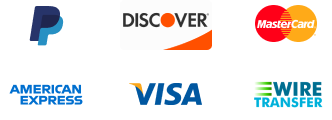The global Sport Bottle Market is expected to experience a robust growth trajectory with an approximate compound annual growth rate (CAGR) of 5.1% over the forecast period spanning from 2025 to 2033. This remarkable growth trajectory is primarily attributed to Growing health and fitness trends and increasing demand for reusable water bottles, a key market driver that is propelling the industry forward.
Our comprehensive report delves into these lucrative opportunities, providing valuable insights on a country-level basis. Additionally, the report offers a detailed analysis of the Sport Bottle Market share by top market players, market segments, latest trends, regional analysis, and commercial developments shaping the global Sport Bottle market over the projected period.
The market trends section provides a comprehensive analysis of the market's development, encompassing key aspects such as market evolution, drivers, obstacles, opportunities, challenges, Porter's Five Forces Framework, macroeconomic insights, value chain analysis, and pricing dynamics. These factors collectively shape the current state of the market and significantly impact its outlook for the forecasted period.
The growth of the market is influenced by a range of factors, including drivers, restraints, and opportunities. The Sport Bottle market growth is primarily driven by factors such as Growing health and fitness trends and increasing demand for reusable water bottles.
On the flip side, restraints act as challenges and impediments that the market must navigate. These may encompass factors like economic uncertainties, regulatory hurdles, supply chain disruptions, and competitive pressures. However, it is important to note that challenges also bring opportunities.
Sustainable materials, innovative designs, personalized bottles and smart features is anticipated to foster a surge in the growth of the Sport Bottle market. Leveraging restraints can open doors to untapped opportunities within the Sport Bottle Market. By devising innovative solutions to overcome obstacles, penetrating underserved market segments, and venturing into new geographical regions, businesses can not only mitigate restraints but also propel sustainable growth and establish a competitive edge. Strategically addressing these restraints is crucial for businesses to effectively navigate the Sport Bottle Market's ever-evolving landscape.
| ATTRIBUTES | DETAILS |
|---|---|
| Study Period | 2021-2033 |
| Historical Year | 2021-2024 |
| Forecast Period | 2025-2033 |
| Segment By Type |
|
| Segment By Application |
|
| Regional Insights |
|
Plastic: Dominates the market due to affordability and lightweight features. However, concerns about environmental sustainability are promoting a gradual shift toward eco-friendly alternatives.
Stainless Steel: Gaining popularity for durability, insulation properties, and environmental sustainability.
Glass: Preferred for its eco-friendly and chemical-free nature, though its fragility limits adoption.
Silicone: Emerging as a flexible and lightweight material option.
Offline Retail: Includes supermarkets, hypermarkets, and specialty stores, which offer tangible product experiences.
Online Platforms: Rapid growth attributed to convenience, broader product availability, and discounts offered by e-commerce platforms.
Adults: Primary consumer base driven by sports enthusiasts and gym-goers.
Kids: Increasing demand due to the availability of compact, colorful, and spill-proof designs.
Sports & Outdoor Activities: Accounts for the largest share, driven by rising participation in fitness programs and outdoor adventures.
Gym & Fitness Centers: Growing adoption as part of the fitness culture.
Daily Use: Popular for office-goers and school children.
The dynamics of the Sport Bottle Market vary significantly across different regions, namely North America, Europe, APAC, and LAMEA.
North America is characterized by a robust market driven by a technologically advanced ecosystem and strong consumer demand. Regulatory support for sustainable practices and innovation further fuels the Sport Bottle market's growth in North America.
In Europe, a similar emphasis on sustainability, coupled with a diverse consumer base, is driving market expansion. The region's stringent quality standards also create opportunities for companies that can meet these requirements.
In APAC, the market is experiencing remarkable growth due to the region's sheer size, emerging economies, and burgeoning middle-class population. The competitive landscape in APAC is evolving rapidly with a surge in local players.
In LAMEA, the market is showing potential as economies in this region develop, and industries diversify. Opportunities abound for businesses that can navigate the unique challenges and leverage local resources effectively. Understanding these regional dynamics is vital for market participants looking to navigate and succeed in the global Sport Bottle Market.

A robust competitive analysis is integral to understanding the landscape of the Sport Bottle Market. In a market environment characterized by dynamic shifts and evolving consumer preferences, businesses must assess their competitive standing comprehensively. This analysis involves a thorough examination of key market players, their strengths, weaknesses, market share, and strategies. By evaluating the competitive forces at play, businesses can identify potential opportunities and threats within the market.
Moreover, a well-executed competitive analysis can uncover gaps in the market that provide openings for innovation and differentiation. Understanding the competitive landscape allows companies to position themselves strategically, enhancing their ability to respond to market changes and gain a competitive edge. It also empowers businesses to make informed decisions, allocate resources effectively, and adapt their marketing and product development efforts to outperform competitors. The market exhibits consolidation as prominent players hold substantial market share. Key Players Such as,



